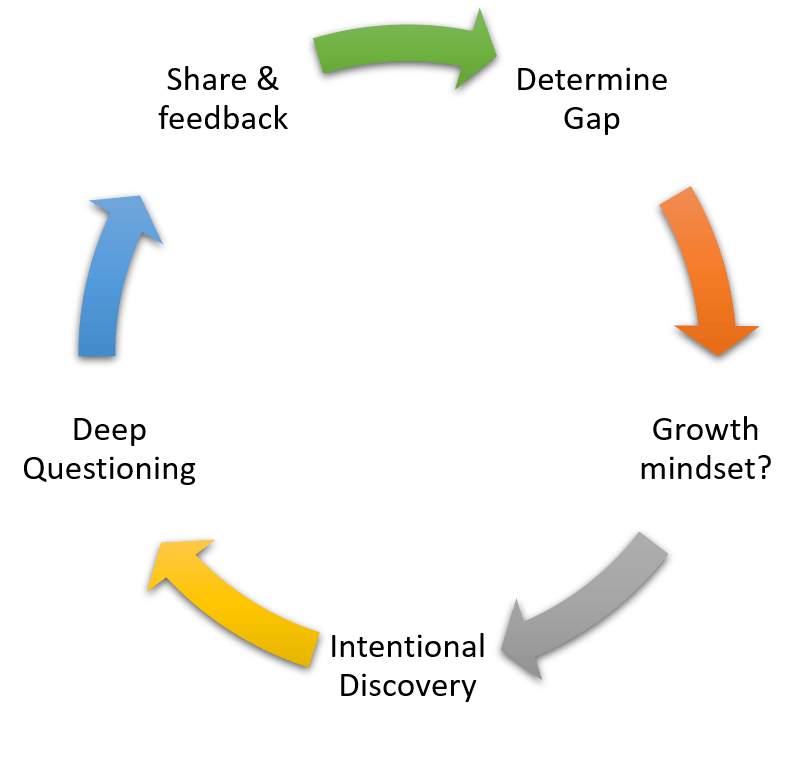
Carpe Diem: why L&D needs to rethink curiosity

Written by guest blogger Shannon Tipton, workplace Learning Strategist and owner of Learning Rebels. Shannon is excited to work with organizations to develop learning solutions to achieve applicable business results. Recently named in the top 100 eLearning 'Movers and Shakers’ by eLearning Industry, Shannon’s blog ‘Learning Rebels’ is in the top 100 eLearning blogs.
Trying to define curiosity is like trying to define the color blue. Depending on your perspective, mindset, and motivations - curiosity could mean being open to more information or inclined to risk-taking actions and decisions, falling down the rabbit hole of the internet, or being engrossed in research papers.
Curiosity is such a natural part of who we are and what we do that we are oblivious to its reach into our lives. With the ease of access to information, our continuous demand for information drives everything from the global economy to learning motivation. The impulse to search and discover is ingrained into a person’s DNA.
Todd Kashdan, author of Curious? Discover the Missing Ingredient in Life, believes “in order to find purpose and meaning in life, one must be curious, engage in experimentation, and utilize all that can be gained from life’s many trials and errors.”
“Curiosity: the desire to understand what you do not.” – William James
When thinking about curiosity as utilizing “all that can be gained from life’s many trials and errors,” there was never a more important time for L&D to support breakthrough thinking, have curiosity as a business practice, and seize the day. This means tightening the relationship between learning and business to build curiosity into the business ecosystem.
Creativity, curiosity, and business
As nebulous as the concept of curiosity is, we can readily connect its importance to business success. We know there is a thread that leads from curiosity to creativity. However, as we unravel that thread there are some interesting discoveries.
The IBM Institute for Business Value conducted a survey of 1500 C-suite level executives and asked, “What do you really need in leadership today?”
The answer: creativity.
Understanding that creativity and curiosity go hand in hand, Francesca Gino, Professor at Harvard Business School, conducted a survey of 520 CLOs and found “[CLOs] discourage curiosity because the company would be harder to manage, and disagreements would arise slowing productivity and execution.”
Additionally, a recent McKinsey leadership survey stated, “leadership values and requires employees who question the status quo. However, research shows that management intentionally (or unintentionally) suppresses creativity efforts to mitigate risk.”
The question then becomes how can L&D square this discovery? Especially when it seems all forces are working against each other.
Curiosity leads to business benefits
“When we are curious, we view tough situations more creatively.” – Francesca Gino
Every day there are pieces of knowledge waiting to be discovered and explored, then pieced together like a jigsaw puzzle. To make these discoveries, businesses must rely on key curiosity foundations such as open communication and collaboration, and by doing so, they will see improvements in areas that directly impact business goals:
- Reduced group conflict
- More accepting of positive changes
- Less confirmation bias
- Fast and better problem solving
- Greater adaptability
- Open skill sharing
These results become apparent when L&D nurtures, and businesses support an organizational culture of experimentation centered around curiosity and innovation. Curiosity is the thread that connects turning pieces of knowledge into greater business discoveries. Curiosity is the foundation of how a business goes from direct mail for movies to being the largest subscription streaming service worldwide as of March 2020.
Curiosity is the difference between Blockbuster and Netflix.
Business and learning leaders alike can point to business improvements stemming from broadening team members’ curious horizons from “giving answers” to “asking questions.” The internet is full of business use cases that demonstrate using the power of putting curious minds to work in a collaborative effort.
But how to get there from here?
Building curiosity into the business
"Curiosity results from a motivation to master one’s environment." – R.W. White, 1959
How can L&D rethink curiosity for better business use? First, remove the instinct for loss aversion, and treat curiosity and experimentation as practice. It is not surprising to know that curiosity is the common denominator between successful people and businesses.
Often confused as a serendipitous calling (curiosity struck me…), curiosity is like a series of threads woven together to make a piece of cloth. In this case, curiosity is woven together throughout actions to further develop a growth mindset. Curiosity is a skill that can be improved with effort and motivation. One must fight for curiosity to take hold, otherwise, mundane tasks subvert efforts.
This means adding questioning as a practice. With this in mind, L&D must influence the questioning behaviors of the business at all times.
- Embrace uncertainty
- Taking an interest beyond this moment
- Looking at reality from a different perspective
- Challenge what you think you know
- Leaning into failure
A more concrete action to build curiosity and support innovation within business is to look internally at the diversity of your organization. According to a study conducted by Boston Consulting Group, a clear path to creating a more innovative organization is by hiring and having in place people with different backgrounds and experiences. By doing so businesses will see that diverse teams will often see the same problem from different perspectives, creating different opportunities for more successful solutions.
Discover curiosity through intentional cultivation
As stated, curiosity is not a serendipitous event, it is time spent listening to the people in your business and being mindful of your surroundings. It’s taking time to understand people and situations from different perspectives and not your own biases. Use the below curiosity process to help activate the curious mindset of the business.

(Credit image: Shannon Tipton, Learning Rebels LLC)
Determine Gap: What is the challenge that is driving curiosity?
Growth Mindset: Are you prepared for the answer, whatever it may be?
Intentional Discovery: Search with intent, challenge the reality.
Deep Questioning: “What if..?” How can we..?” “What would happen..?”
Share & Feedback: Share results of discovery with the team, allowing the team to start their own curiosity process.
To wrap this up
Often it is thought that business processes and procedures are at odds with curiosity and creativity, but, in fact, the opposite is true. To make having a curious mindset a norm, L&D in partnership with leadership will need to recognize the value of having curiosity embedded as much as they embed service values. The key is to regularly reinforce and model the mindset so teams see that leadership recognizes and rewards curious efforts.
Businesses guide people and processes daily as part of the business ecosystem, then as such, consciously giving teams the time and energy to be curious, collaborate and create, should be another natural function. In doing so we will see real business results and Carpe Diem!
Catch up on the previous articles in our Carpe Diem L&D series:
- Carpe Diem L&D, by Laura Overton, award-winning L&D Analyst
- Seize the opportunity to link learning to business, also by Shannon Tipton
- L&D: leverage community to Carpe Diem, by Michelle Ockers, Learning Strategy Expert and host of the ‘Learning Uncut’ podcast
For more insights, be sure to subscribe to the Go1 newsletter to stay on top of all the latest L&D trends. Or, you can book a demo today to find out how Go1 can help with your team’s learning needs.
References
1. L&D: leverage community to Carpe Diem
2. Laura Overton, Michelle Ockers and I are writing a series of articles on the Carpe Diem L&D theme as part of our Emerging Stronger initiative. The first blog in this series, Carpe Diem L&D, is written by Laura Overton.
3. Shannon Tipton: Seize the opportunity to link learning to business
4. IBM Institute for Business Value survey
5. https://hbr.org/2018/09/the-business-case-for-curiosity
6. https://www.mckinsey.com/featured-insights/leadership/decoding-leadership-what-really-matters
7. https://www.mckinsey.com/business-functions/strategy-and-corporate-finance/how-we-help-clients/growth-and-innovation
8. L&D: Leverage Community to Carpe Diem Link to Michelle’s Carpe Diem blog post
9. https://learninguncut.libsyn.com/emergent-series-accelerating-learning-from-failure-brian-murphy-and-jeff-mariola
10. https://www.bcg.com/en-us/publications/2018/how-diverse-leadership-teams-boost-innovation




